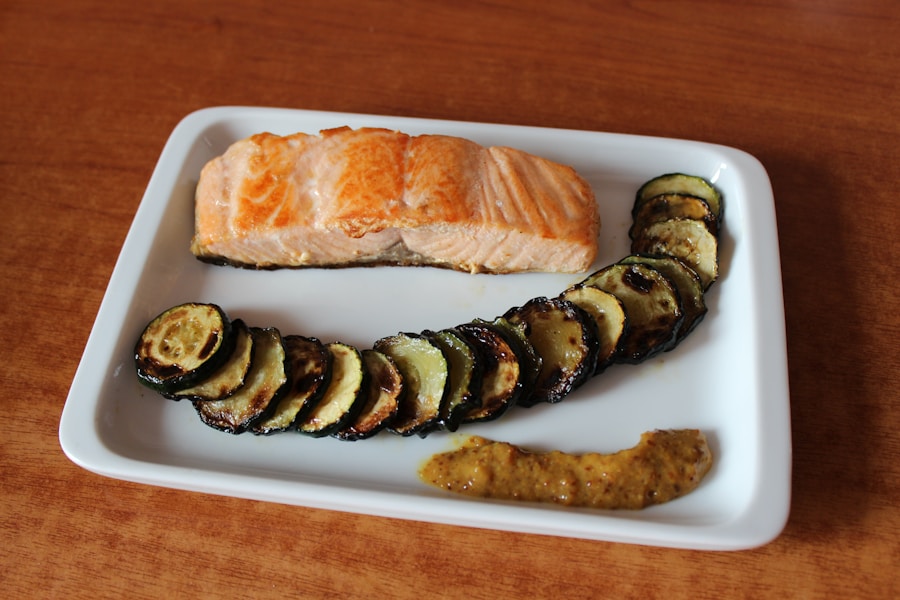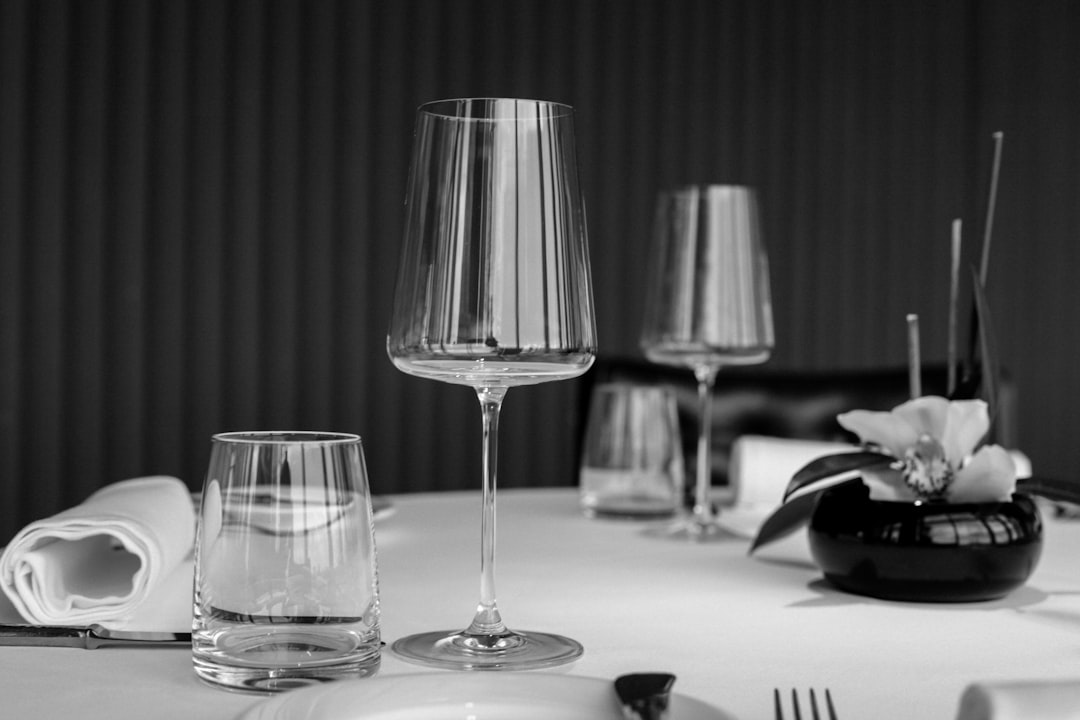Wine pairing is an art that transcends mere culinary practice; it is a harmonious dance between flavors, aromas, and textures that can elevate a meal from ordinary to extraordinary. The concept of pairing wine with food has been around for centuries, rooted in the belief that certain wines can enhance the dining experience by complementing or contrasting the flavors of the dishes served. This intricate relationship is influenced by various factors, including the ingredients used, cooking methods, and even cultural traditions.
Understanding the principles of wine pairing can transform a simple meal into a gastronomic adventure, allowing diners to explore the nuances of both food and wine. At its core, wine pairing is about balance. The goal is to create a synergy between the wine and the food, where neither overpowers the other.
This balance can be achieved through various approaches, such as matching the weight of the dish with the body of the wine or contrasting flavors to create an exciting interplay on the palate. For instance, a rich, buttery Chardonnay can beautifully complement a creamy pasta dish, while a crisp Sauvignon Blanc might provide a refreshing counterpoint to a spicy Thai salad. As we delve into the specifics of pairing wines with different types of dishes, it becomes clear that there are no hard and fast rules; rather, it is an exploration of personal taste and preference.
Key Takeaways
- Wine pairing enhances the dining experience by complementing the flavors of the food.
- Light and crisp white wines like Sauvignon Blanc or Pinot Grigio are great for appetizers and starters.
- When it comes to seafood and fish dishes, consider pairing with a dry and acidic white wine such as Chardonnay or a light-bodied red like Pinot Noir.
- Poultry and pork dishes can be paired with medium-bodied red wines like Merlot or Zinfandel, or a light and fruity white wine like Riesling.
- For beef and lamb entrees, opt for full-bodied red wines such as Cabernet Sauvignon or Syrah to complement the richness of the meat.
- Vegetarian and vegan meals can be paired with a variety of wines, including light-bodied reds, crisp whites, or even a sparkling wine like Prosecco.
- Spicy and ethnic dishes can be complemented by off-dry white wines like Gewürztraminer or a fruity red wine like Grenache.
- Cheese and charcuterie pair well with a range of wines, from light and fruity to bold and robust, depending on the types of cheese and meats.
- Dessert wines like Port or Sauternes are perfect for pairing with sweet treats, offering a delightful contrast to the sweetness of the dessert.
- When it comes to casual and everyday meals, choose wines that you enjoy and that complement the flavors of the dish, whether it’s a light white wine, a medium-bodied red, or even a rosé.
Choosing the Right Wine for Appetizers and Starters
Sparkling Wines: The Perfect Palate Cleanser
Sparkling wines, such as Champagne or Prosecco, are an excellent choice for appetizers. The bubbles cleanse the palate, preparing it for the flavors to come. For example, a glass of brut Champagne pairs wonderfully with salty snacks like olives or cured meats, as the acidity cuts through the richness and enhances the overall experience.
White Wines: A Versatile Option
White wines also shine in this category, particularly those with bright acidity and fresh fruit notes. A Sauvignon Blanc, with its zesty citrus and herbal characteristics, can complement a variety of starters, from goat cheese crostini to shrimp cocktails. Alternatively, a light-bodied Pinot Grigio offers a crisp and refreshing option that pairs well with seafood-based appetizers or vegetable platters.
Considering the Dominant Flavors
The key is to consider the dominant flavors in your starters. For instance, if you are serving a rich cheese platter, a fuller-bodied white like a Viognier or even a light red like Pinot Noir can provide a delightful contrast. By taking the time to select the perfect wine, you can create a harmonious and enjoyable dining experience.
Best Wines to Complement Seafood and Fish Dishes

Seafood and fish dishes present unique challenges and opportunities for wine pairing due to their delicate flavors and varying textures. Generally, white wines are favored for these dishes, as they tend to complement rather than overpower the subtle nuances of seafood. A classic pairing is Chardonnay with buttery lobster or grilled fish; the wine’s creamy texture mirrors the richness of the dish while its acidity balances it out.
For example, a well-oaked Chardonnay from California can enhance the flavors of a grilled halibut drizzled with lemon butter sauce. On the other hand, lighter fish dishes such as sole or flounder benefit from crisper white wines like Albariño or Grüner Veltliner. These wines offer bright acidity and refreshing fruit notes that enhance the natural flavors of the fish without overshadowing them.
Additionally, when pairing with shellfish like oysters or clams, consider a dry Riesling or Muscadet; their minerality and acidity can elevate the briny flavors of these delicacies. For those who prefer red wine, a light-bodied option like Pinot Noir can work surprisingly well with certain fish dishes, particularly those prepared with earthy sauces or grilled preparations.
Pairing Wines with Poultry and Pork
| Wine Type | Poultry Pairing | Pork Pairing |
|---|---|---|
| Chardonnay | Roast chicken, turkey | Pork chops, tenderloin |
| Riesling | Grilled chicken, duck | Pork tenderloin, schnitzel |
| Pinot Noir | Chicken thighs, quail | Pork belly, roast pork |
| Merlot | Chicken drumsticks, pheasant | Pork ribs, pulled pork |
Poultry and pork are versatile proteins that lend themselves to a wide range of wine pairings. When it comes to chicken dishes, white wines often take center stage due to their ability to complement the mild flavor of the meat. A classic pairing is Chardonnay with roasted chicken; its buttery notes harmonize beautifully with the savory flavors of herbs and spices used in preparation.
Alternatively, a Sauvignon Blanc can provide a refreshing contrast when paired with lemon-herb grilled chicken, enhancing the dish’s brightness. Pork, on the other hand, offers more complexity in terms of flavor profiles depending on how it is prepared. For instance, if you are serving a sweet and tangy barbecue pork dish, consider a fruity Zinfandel or Grenache; these wines have enough body and fruitiness to stand up to the bold flavors of barbecue sauce.
Conversely, if you are enjoying a herb-crusted pork tenderloin, a medium-bodied red like Merlot or even a light-bodied Pinot Noir can provide an elegant pairing that complements the dish’s savory elements without overwhelming them.
Finding the Perfect Wine for Beef and Lamb Entrees
When it comes to red meats like beef and lamb, bold red wines typically reign supreme due to their robust flavors and tannic structure. A classic pairing for steak is Cabernet Sauvignon; its full-bodied nature and firm tannins complement the richness of grilled or roasted beef beautifully. For example, a well-marbled ribeye steak pairs exceptionally well with an aged Cabernet from Napa Valley, where the wine’s dark fruit notes and hints of oak enhance the savory qualities of the meat.
Lamb presents its own unique challenges in terms of pairing due to its distinct flavor profile. A Syrah or Shiraz can be an excellent choice for lamb dishes seasoned with herbs like rosemary or thyme; these wines often exhibit peppery notes that resonate with the meat’s gaminess. Additionally, if you are preparing lamb with Mediterranean spices or served in a curry sauce, consider a Grenache or even a Tempranillo; these wines offer fruit-forward profiles that can balance out spiciness while enhancing the dish’s overall flavor.
Exploring Wine Options for Vegetarian and Vegan Meals

Vegetarian and vegan meals have gained popularity in recent years as more people embrace plant-based diets for health and environmental reasons. Pairing wine with these meals requires an understanding of how different vegetables and plant-based proteins interact with various wine styles. For instance, dishes featuring earthy ingredients like mushrooms or lentils can benefit from medium-bodied reds such as Pinot Noir or Chianti; their acidity and fruitiness complement the umami flavors found in these ingredients.
On the white wine side, consider pairing Sauvignon Blanc with fresh salads or vegetable-based dishes that feature citrus dressings; its zesty acidity enhances the freshness of greens while providing a delightful contrast to richer components like avocado or nuts. Additionally, if you are serving spicy vegan curries or stir-fries, an off-dry Riesling can be an excellent choice; its sweetness balances out heat while its acidity keeps the palate refreshed.
Selecting Wines to Enhance Spicy and Ethnic Dishes
Spicy and ethnic dishes present unique challenges when it comes to wine pairing due to their bold flavors and heat levels. The key is to find wines that can either complement or counterbalance these intense flavors without being overwhelmed by them. For example, when enjoying spicy Thai cuisine featuring chili-laden curries or stir-fries, consider an off-dry Riesling or Gewürztraminer; their natural sweetness helps temper heat while enhancing aromatic spices.
Similarly, when indulging in Indian cuisine characterized by rich curries and complex spice blends, look for aromatic whites like Viognier or even sparkling wines like Prosecco; these options provide refreshing acidity that cuts through richness while complementing aromatic spices beautifully. On the red side, consider lighter-bodied options such as Gamay or Grenache when pairing with dishes like Moroccan tagines; their fruit-forward profiles harmonize well with sweet spices while providing enough structure to stand up to heartier ingredients.
Sipping on the Best Wines with Cheese and Charcuterie
Cheese and charcuterie boards have become staples at gatherings and celebrations, offering an array of flavors that can be enhanced by thoughtful wine pairings. The key to successfully pairing wine with cheese lies in understanding both texture and flavor profiles. For creamy cheeses like Brie or Camembert, consider pairing them with sparkling wines; their effervescence cuts through richness while enhancing creaminess.
A dry Champagne or Cava can elevate these cheeses beautifully. For harder cheeses such as aged Gouda or Parmigiano-Reggiano, opt for full-bodied reds like Cabernet Sauvignon or Malbec; their tannins complement the cheese’s nutty flavors while providing structure to balance richness. When it comes to charcuterie boards featuring cured meats like prosciutto or salami, consider lighter reds such as Pinot Noir or Chianti; their acidity helps cleanse the palate between bites while enhancing savory notes found in cured meats.
Dessert Wines: Finding the Ideal Match for Sweet Treats
Dessert wines offer a delightful way to conclude a meal by pairing them with sweet treats that enhance their flavors without overwhelming them. When selecting dessert wines, consider both sweetness levels and flavor profiles of your desserts. For instance, rich chocolate desserts pair beautifully with fortified wines like Port or Banyuls; their concentrated sweetness complements chocolate’s bitterness while enhancing its depth.
For fruit-based desserts such as tarts or sorbets, consider lighter dessert wines like Moscato d’Asti or Sauternes; their natural sweetness harmonizes with fruity flavors while providing refreshing acidity that prevents cloying sensations on the palate. Additionally, if you are serving creamy desserts like panna cotta or cheesecake, opt for dessert wines with higher acidity such as late-harvest Riesling; this balance allows both elements to shine without overpowering one another.
Tips for Pairing Wine with Casual and Everyday Meals
Pairing wine with casual meals doesn’t have to be complicated; rather, it should be an enjoyable experience that enhances everyday dining moments. One effective approach is to focus on what you love—whether it’s pizza night at home or a simple pasta dish—choose wines that resonate with your personal preferences rather than adhering strictly to traditional pairings. For example, if you’re enjoying pepperoni pizza, consider reaching for a fruity Chianti or even a hoppy IPA; both options can complement tomato sauce while enhancing savory elements.
Another tip is to consider regional pairings; often local cuisines have traditional wine pairings that work harmoniously together due to shared ingredients and flavor profiles. If you’re grilling burgers on a summer evening, try pairing them with an American craft beer or even a bold Zinfandel; both options can elevate grilled flavors while providing refreshing contrasts against rich toppings like cheese or barbecue sauce.
Enjoying the Perfect Wine Pairing Experience
Wine pairing is not merely about following rules but rather about exploring personal tastes and preferences while enhancing culinary experiences through thoughtful selections. By understanding how different wines interact with various foods—from appetizers to desserts—diners can embark on an exciting journey that celebrates flavor harmony across diverse cuisines. Whether you’re hosting an elegant dinner party or enjoying casual meals at home, embracing this art form allows you to savor every moment spent around good food and great company while discovering new favorites along the way.



